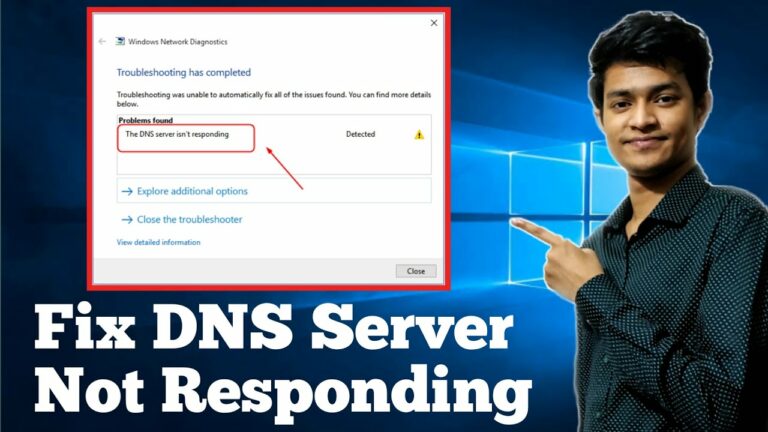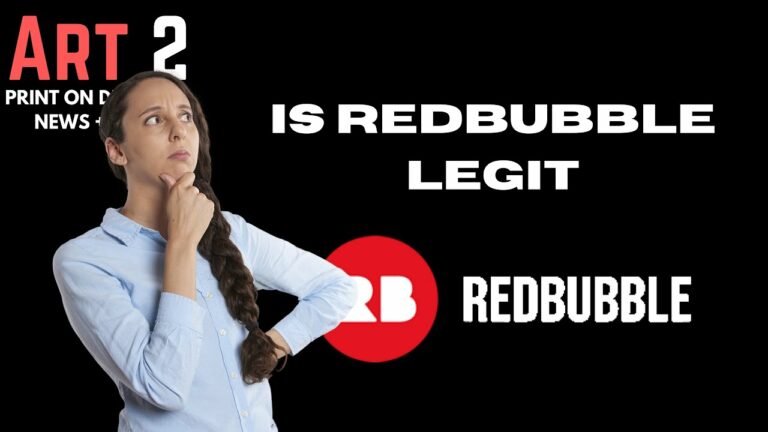In today’s digital age, domain names have become vital assets for individuals and businesses alike. Whether you are starting a new website, launching an online business, or simply managing existing domains, understanding the fundamentals of domain name management is essential. This introductory article serves as a comprehensive guide, specifically designed for beginners, to help you navigate the intricate world of domain name management with ease and confidence. By exploring key concepts and practical tips, you will gain the necessary knowledge and skills to effectively manage your domain names and harness the full potential of your online presence.
Registering a Domain Name
Choosing a Domain Name
When registering a domain name, it is important to choose a name that accurately represents your brand or organization. Your domain name should be concise, easy to remember, and reflect the purpose of your website. Consider using keywords that are relevant to your industry to improve your website’s search engine optimization. It is also advisable to choose a domain name with a popular domain extension, such as .com, as this is the most recognized and widely used extension.
Checking Availability
After you have chosen a domain name, it is crucial to check its availability. There are various online tools and domain registration websites that allow you to search for available domain names. Simply enter your desired domain name into the search bar and the tool will indicate if it is available for registration. It is essential to check domain availability to ensure that the name you want is not already being used by another entity.
Selecting a Registrar
Once you have confirmed the availability of your desired domain name, it is time to select a registrar to register your domain. A domain registrar is a company or organization that manages the reservation of domain names. It is important to choose a reputable registrar that offers reliable services and excellent customer support. Consider factors such as pricing, security features, and additional services provided by the registrar before making your decision.
Registering the Domain
To register your chosen domain name, you will need to provide certain information to the registrar, such as your personal or business contact details. The registrar will guide you through the registration process and may also require you to agree to their terms and conditions. Once you have successfully completed the registration process and made the necessary payment, your domain name will be officially registered and reserved for your use.
Transferring a Domain Name
Reasons for Transferring
There may be instances when you need to transfer your domain name from one registrar to another. Some common reasons for domain transfers include improved pricing, better customer support, or the desire to consolidate all your domain names under one registrar. Additionally, if you change web hosting providers or rebrand your business, you may need to transfer your domain to reflect these changes.
Preparing for Transfer
Before initiating a domain transfer, it is crucial to ensure that your domain is eligible for transfer. Some registrars may impose restrictions on transferring newly registered domains or domains that have recently been transferred. You will also need to acquire certain information from your current registrar, such as an authorization code or transfer key, to initiate the transfer process.
Unlocking the Domain
To transfer your domain, you will need to unlock it from your current registrar’s control panel. This step is necessary to allow the receiving registrar to initiate the transfer process. Consult your current registrar’s documentation or contact their customer support for guidance on how to unlock your domain.
Requesting Authorization Code
Once your domain is unlocked, you will need to request an authorization code, also known as an EPP code or transfer key, from your current registrar. This code is required by the receiving registrar to authenticate and authorize the transfer of your domain. Follow the instructions provided by your current registrar to obtain the authorization code.
Initiating the Transfer
After receiving the authorization code, you can initiate the transfer process with the new registrar. Provide the required information, including the authorization code, and follow their instructions to complete the transfer process. The timeframe for completing the transfer can vary, but you will receive notifications and updates from both registrars throughout the process.
Renewing a Domain Name
Understanding Expiration Dates
Every domain name has an expiration date, which is the date when the domain registration needs to be renewed. It is crucial to be aware of your domain’s expiration date to avoid any potential disruptions to your website or email services. Failure to renew your domain before the expiration date can lead to the loss of your domain name.
Renewal Notices
Registrars usually send renewal notices via email to remind you of your upcoming domain expiration date. It is important to keep your contact information up to date with the registrar to ensure that you receive these notifications. Take note of the renewal notice and make sure to initiate the renewal process well before the expiration date to avoid any potential issues.
Renewing with the Registrar
To renew your domain name, you will need to log in to your account with the registrar and navigate to the domain management section. Look for the option to renew your domain and follow the steps provided by the registrar. Some registrars offer the option to renew domains for multiple years, providing additional convenience and avoiding the need for frequent renewals.
Managing DNS Records
Understanding DNS Records
DNS (Domain Name System) records are a vital component of managing your domain name. These records contain information that connects your domain name to the IP addresses of your web servers and other services associated with your domain, such as email servers. Understanding how DNS records work is essential for configuring your domain successfully.
Types of DNS Records
There are several types of DNS records that serve different purposes. Some common DNS records include:
- A Records: Maps a domain name to an IP address.
- CNAME Records: Creates an alias for a domain name to point to another domain or subdomain.
- MX Records: Specifies the email servers responsible for receiving incoming email.
- TXT Records: Allows you to add additional text information to your domain’s DNS.
Each DNS record type has specific properties and uses, and they can be managed through your domain registrar’s DNS management interface.
Changing DNS Records
To change DNS records for your domain name, log in to your registrar’s control panel and navigate to the DNS management section. Locate the DNS record you wish to change and update the relevant information. Changes to DNS records can take some time to propagate globally, so it is important to be patient and allow the changes to take effect.
Managing Subdomains
Subdomains are extensions of your main domain that allow you to create separate websites or sections within your domain. For example, if your domain is example.com, you can create a subdomain like blog.example.com to host your blog. Managing subdomains involves creating, modifying, or deleting subdomains through your registrar’s control panel or DNS management interface.
Configuring Domain Privacy
Understanding Domain Privacy
Domain privacy, also known as WHOIS privacy, is a service that protects your personal or business contact information from being publicly displayed in the WHOIS database. The WHOIS database contains contact information for registered domain names, which can leave you vulnerable to spam, telemarketing, and identity theft. Domain privacy ensures your contact information remains confidential.
Why Privacy is Important
Privacy is important because it helps protect your personal and sensitive information from falling into the wrong hands. Without domain privacy, anyone can easily access your contact details by conducting a simple WHOIS lookup. This can lead to unwanted solicitation, domain hijacking, and potential security risks. By enabling domain privacy, you can safeguard your personal information and maintain online privacy.
Enabling Privacy Protection
To enable domain privacy, log in to your domain registrar’s control panel and locate the domain privacy or WHOIS privacy settings. Follow the instructions provided by the registrar to enable domain privacy for your domain. Once activated, your contact information will be replaced with generic contact details in the public WHOIS database, ensuring your privacy and security.
Protecting Domain from Unauthorized Transfers
Enabling Transfer Lock
Enabling transfer lock, also known as domain lock or registrar lock, adds an extra layer of protection to your domain name. When transfer lock is enabled, it prevents unauthorized transfers of your domain to another registrar. This feature provides additional security, ensuring that only authorized individuals can initiate a domain transfer.
Adding Authentication Measures
To further protect your domain from unauthorized transfers, consider adding authentication measures provided by your registrar. This can include additional security questions, two-factor authentication, or PIN codes. These measures help verify your identity as the domain owner and add an extra level of security to prevent unauthorized access.
Managing Email Accounts
Creating Email Addresses
When managing a domain name, you have the option to create custom email addresses using your domain. This allows you to have professional email addresses that align with your domain name, such as [email protected] or [email protected] To create email addresses, log in to your registrar’s control panel and locate the email management section. Follow the instructions provided to set up the desired email address/es.
Configuring Email Clients
To access your custom email addresses, you can configure email clients such as Microsoft Outlook, Gmail, or Apple Mail. Each email client has its own setup process, but generally, you will need to provide your email address, password, incoming mail server settings (IMAP or POP), and outgoing mail server settings (SMTP). Consult the documentation or support resources of your chosen email client for specific instructions.
Managing Email Forwarding
Email forwarding allows you to redirect emails sent to your custom email addresses to another email address of your choice. It can be useful when you prefer to manage all your emails in one central inbox. To set up email forwarding, log in to your registrar’s control panel and navigate to the email management section. Look for the option to set up email forwarding and follow the provided instructions to configure the forwarding rules.
Utilizing Domain Forwarding
Setting Up Domain Forwarding
Domain Forwarding, also known as URL forwarding or domain redirection, allows you to redirect your domain to another website or web page. This can be useful when you have multiple domains or if you have migrated your website to a new domain. To set up domain forwarding, log in to your registrar’s control panel and locate the domain forwarding settings. Follow the instructions provided to redirect your domain.
Types of Forwarding
There are two main types of domain forwarding: permanent (301) and temporary (302). Permanent forwarding, or 301 redirects, is used when you want to permanently redirect your domain to another website or page. Temporary forwarding, or 302 redirect, is used when you want to temporarily redirect your domain, and the original domain is expected to be active in the future. Choose the appropriate forwarding type based on your specific needs.
Benefits of Domain Forwarding
Domain forwarding provides several benefits, including:
- Improved user experience: Domain forwarding ensures that visitors accessing your old domain are automatically redirected to the new domain or website, reducing confusion and improving the user experience.
- Search engine optimization (SEO) benefits: Properly implemented domain forwarding can help preserve the SEO value of the old domain by redirecting traffic and preserving backlinks.
- Brand continuity: If you have rebranded or changed your domain, domain forwarding allows you to maintain brand continuity by directing visitors to your new domain without losing existing traffic.
Managing WHOIS Information
Understanding WHOIS
WHOIS is a publicly accessible database that contains contact information for registered domain names. It provides information about the domain owner, registration date, expiration date, and more. As a domain owner, it is important to keep your WHOIS information accurate and up to date, as it is used for various purposes, such as legal and administrative matters.
Updating Contact Information
To update your WHOIS contact information, log in to your registrar’s control panel and navigate to the domain management section. Look for the option to edit or update your contact details and provide the updated information. It is important to keep this information accurate, as it can impact the legitimacy and credibility of your domain.
Monitoring Domain Health and Expiry
Tracking Domain Health
Monitoring the health of your domain ensures that your website and email services are functioning properly. There are several tools and services available that can monitor your domain for uptime, DNS configuration issues, and security vulnerabilities. Regularly monitoring your domain’s health helps you identify and address any potential issues before they impact your online presence.
Setting Reminders for Expiry
To avoid the unintentional expiration of your domain, it is advisable to set reminders for the domain’s expiry date. This can be done through various calendar or task management applications, or by utilizing the reminder features provided by your registrar. By setting reminders, you can ensure that you renew your domain registration well before the expiration date and avoid any disruption to your website or online services.
In conclusion, domain name management plays a crucial role in establishing and maintaining your online presence. By understanding the process of registering, transferring, renewing, and managing various aspects of a domain name, you can effectively utilize your domain to support your brand, facilitate communication, and enhance your overall online experience. It is important to stay informed about the best practices and regularly review your domain management strategies to ensure optimal performance and security.




